Evolution of King Mongkut's University of Technology Thonburi
Revised from the archives of Professor Amorn Sreenilta.
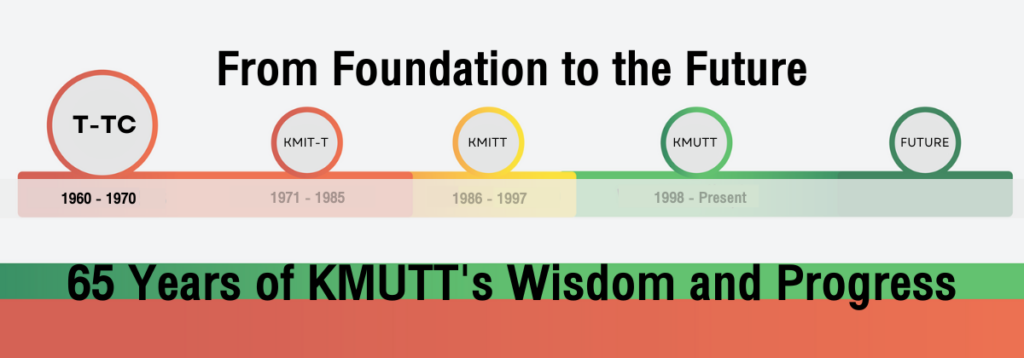
The Power of Sacrifice
Period 1: Thonburi Technical College (1960-1970)
Growing through physical strength, encouragement, intellect, and resources, developed by faculty, staff, and students.
Events Before 1960
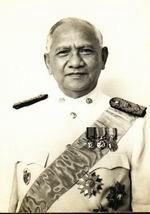
H.E. Prince Pin Malakul
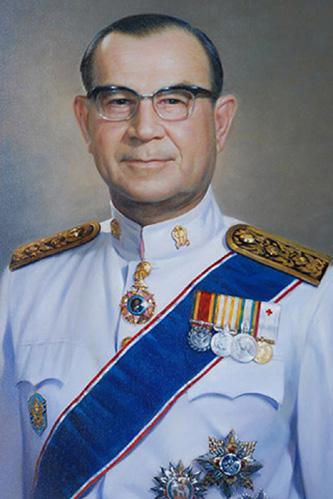
Professor Sanan Sumit
1957
The Minister of Education, H.E. Prince Pin Malakul, and Professor Sanan Sumit, Director-General of the Department of Vocational Education, consulted on producing coordinators between engineers and skilled laborers. The policy was to admit students who had completed grade 9 to study industrial skills for three years, after which they would earn a vocational certificate (Vocational Certificate or V.C.) and either enter the workforce or continue their studies at a technical college for another three years to obtain a higher vocational certificate (Higher Vocational Certificate or H.V.C.).
1958
Director-General Sanan Sumit conducted a survey for a new location for the college and found a plot of land owned by the Crown Property Bureau in Bang Mod Subdistrict, Rat Burana District, Thonburi Province. The Ministry of Education had leased 32 rai of land to establish Thonburi Commercial School. Construction of a two-story wooden building with 14 standard classrooms was completed in 1958, along with the principal’s residence and a cafeteria. Although there were no roads, electricity, water, or telephone services yet, the buildings were ready for immediate use. This location was proposed as the site for the new college, which was named ‘Thonburi Technical College’.
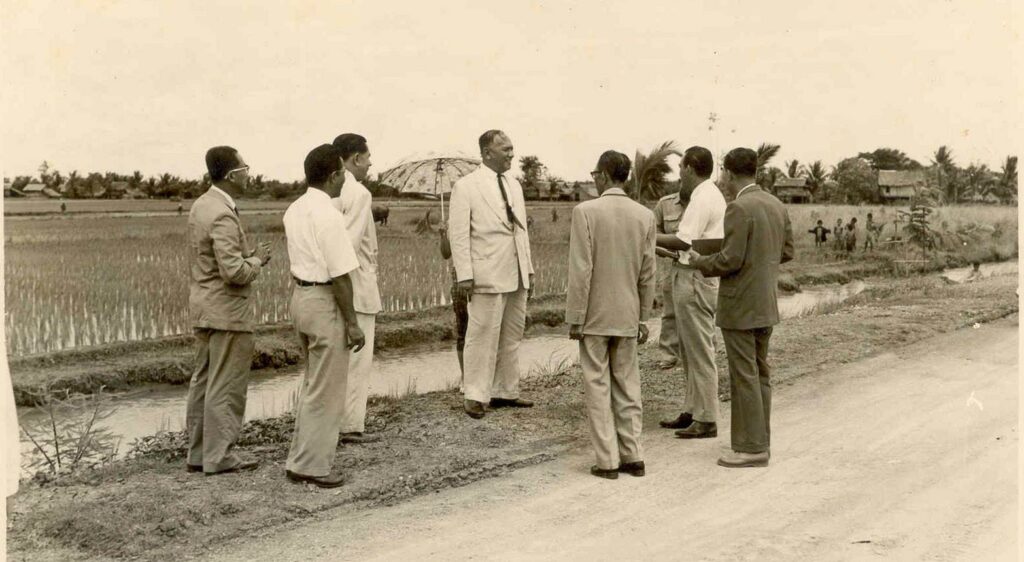
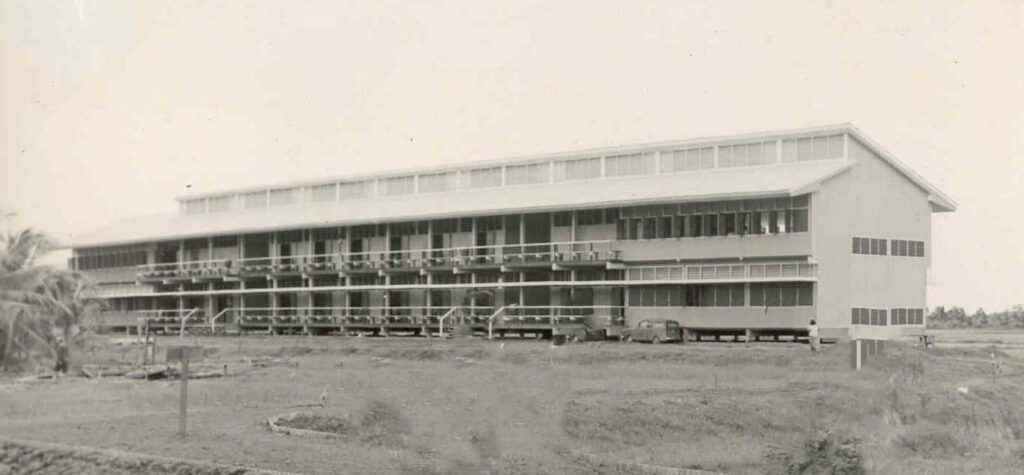
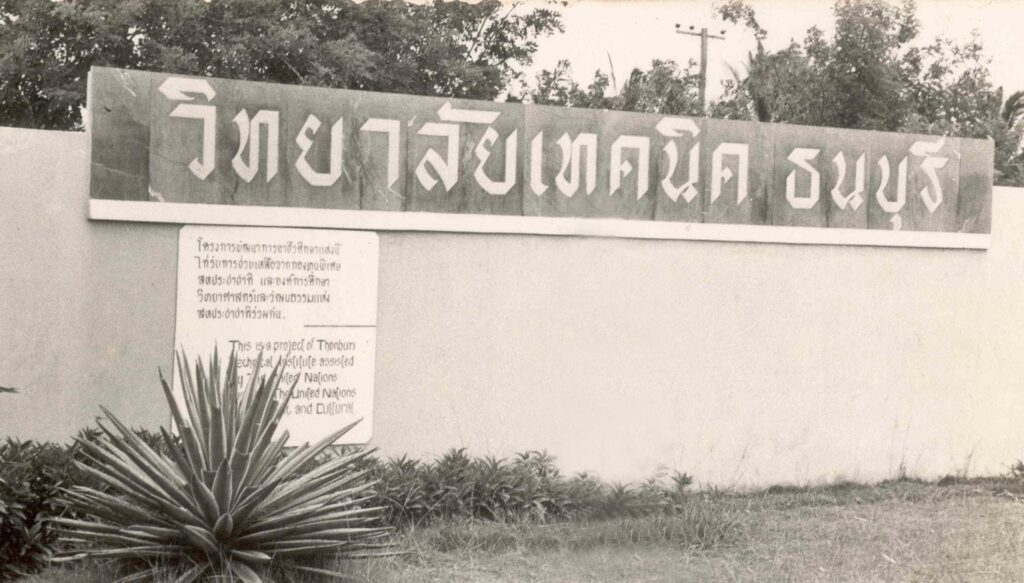
1960
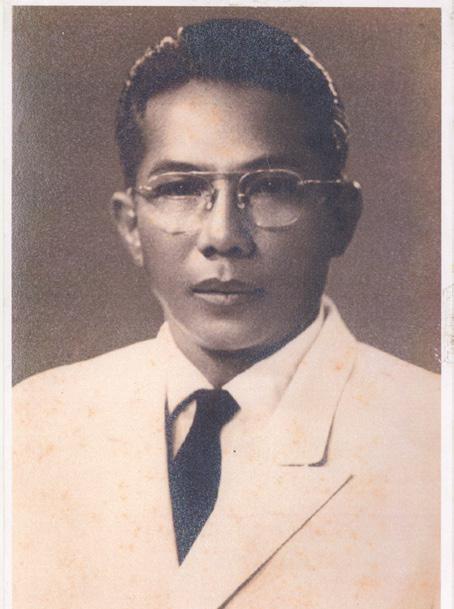
February 4, 1960.
– The Ministry of Education announced the establishment of Thonburi Technical College under the Division of Technical Colleges, Department of Vocational Education. The college accepted students who had completed upper secondary education in the science stream to study for 3 years and earn a Higher Vocational Certificate (H.V.C.). It became the first technical college in Thailand to offer technical training to graduates of the highest level of general education.
– The Department of Vocational Education appointed Mr. Prapa Prajaksupanit, the Head of the Construction Engineering Department at Bangkok Technical College, as the Director of Thonburi Technical College. The appointment was accompanied by the approval of six other faculty members from the same college to join the team: Mr. Sompong Panyasuk, Miss Ubon Chantarakamon, Mr. Uthai Kaewchuang, Mr. Sutham Twitree, Mr. Thanong Rungrojdee, and Mr. Ittisak Thongkham. On the day of the opening ceremony, the seven faculty members traveled to the college using their professional mode of transportation: a boat. The Director made efforts to request Mr. Adirek Srisupphol, the District Officer of Rat Burana at the time, to expedite the construction of the road leading to the college so it would be ready in time for the start of the school term.
April 1960
The college opened applications and conducted entrance exams for its first batch of students from April 1 to 8. Applications were accepted at Bangkok Technical College. In addition to official government announcements, the college also suggested that the Department of Vocational Education broadcast the application guidelines on the Thai National Radio and Radio for Education to ensure wider public awareness. A total of 619 candidates applied, with 609 male and 10 female applicants. 587 candidates took the exam, of which 300 passed and 60 were placed on the waiting list. However, only 122 of the successful candidates reported for registration and officially became students of Thonburi Technical College.
May 17, 1960
– Thonburi Technical College began its first academic term.
– Mr. Sompong Panyasuk served as the Deputy Director, with a total of 29 faculty members (as of May 1, 1961), along with 4 janitorial staff.
– Mr.Rapee Pruksawan, the head of class, was elected as the first president of the Student Council.
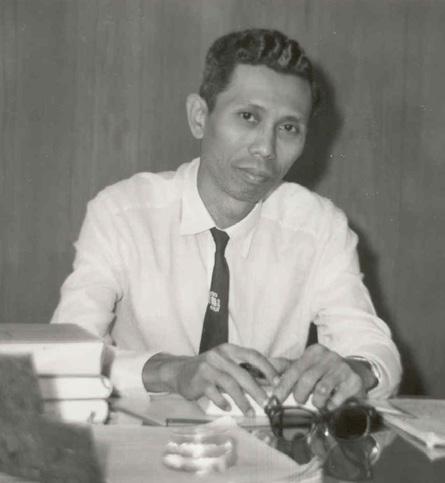
Mr. Sompong Panyasuk
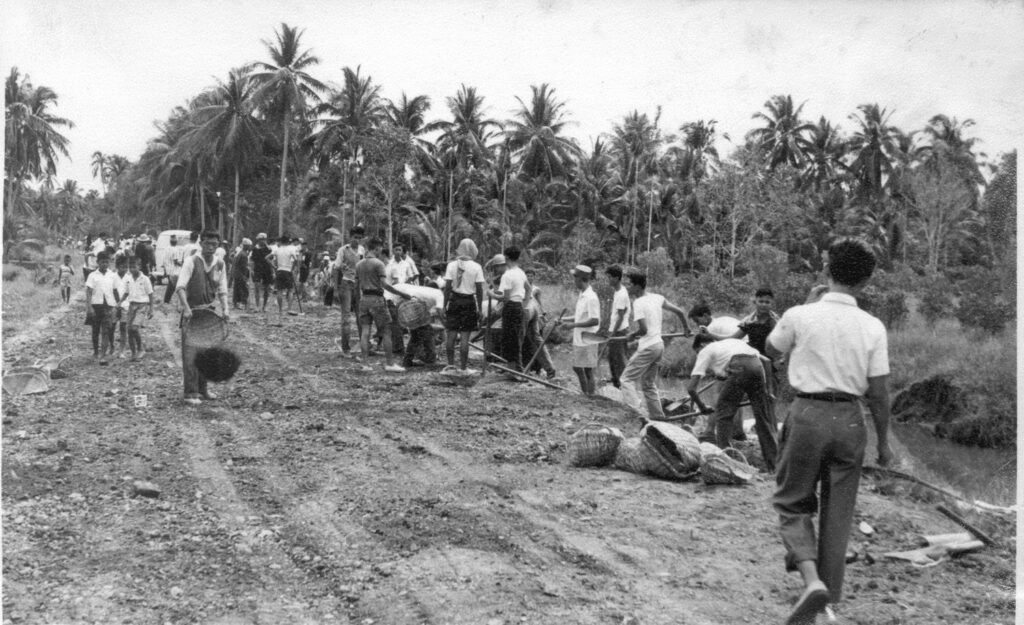
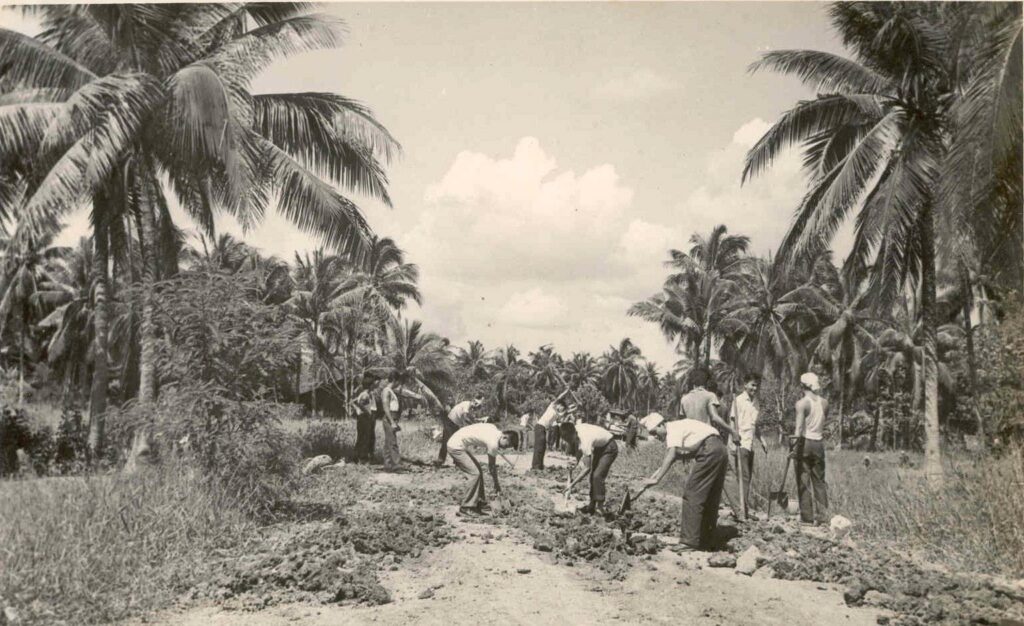
May 29, 1960
Thonburi Technical College participated in local development efforts along Pracha Uthit Road, specifically at kilometer 9, extending from Suksawat Road in Rat Burana Subdistrict to the newly constructed campus of Thonburi Technical College. The college contributed by laying gravel over a distance of approximately 2,320 meters.
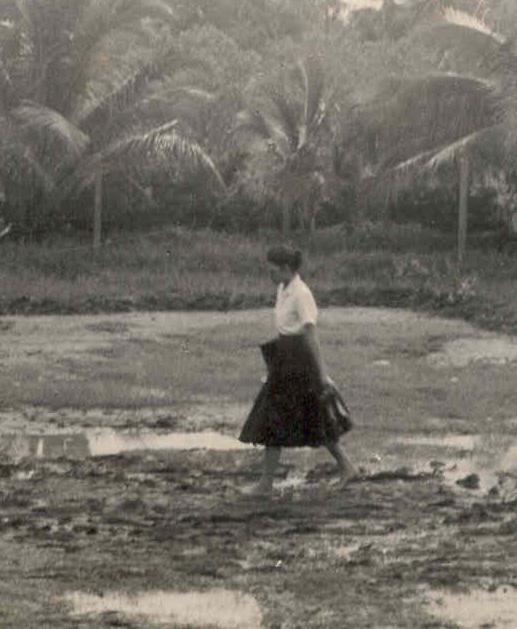
June 10, 1960
The college extended the deadline for registration until June 10, with the number of students increasing to 168. The college then extended the registration period by another week, bringing the total to 219 students, with some students withdrawing. To ensure the full intake of students, the college announced a second round of entrance exams. A total of 142 candidates applied, 138 took the exam, and 95 passed. 90 of them registered as students. When teaching began as normal, the first batch of students consisted of 299 successful candidates, including one female student, Miss Sunanta Phom-iam, one student enrolled through the Department of Vocational Education, and four students who transferred from Chulalongkorn University, bringing the total to 304 students.
The college organized its teaching by dividing students into six classes, following an industrial arts curriculum. In the first year, all students studied the same subjects, which included construction, electrical work, mechanical engineering, metalworking, and drafting. The total learning time for each subject was evenly distributed over the year, with 160 hours per subject, amounting to 800 hours for these five subjects. The remaining 400 hours were dedicated to general education subjects related to technical studies, including English, psychology, mathematics, chemistry, physics, and economics. The academic year was divided into three terms, with classes starting at 9:00 AM and ending at 4:00 PM.
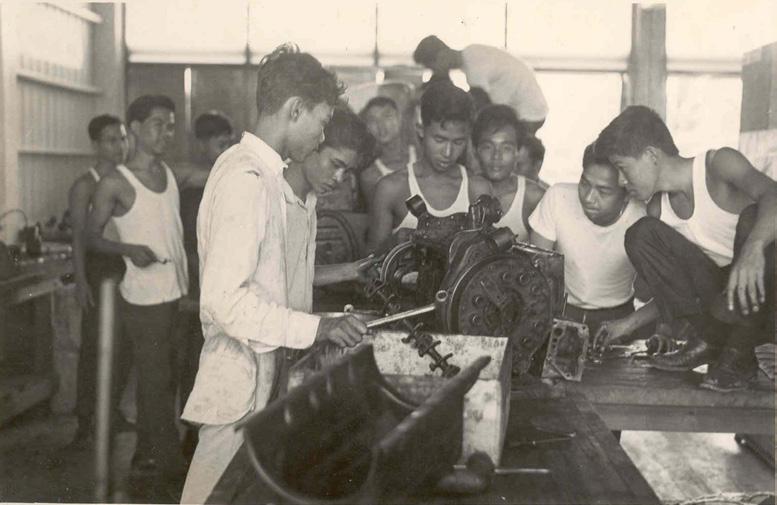
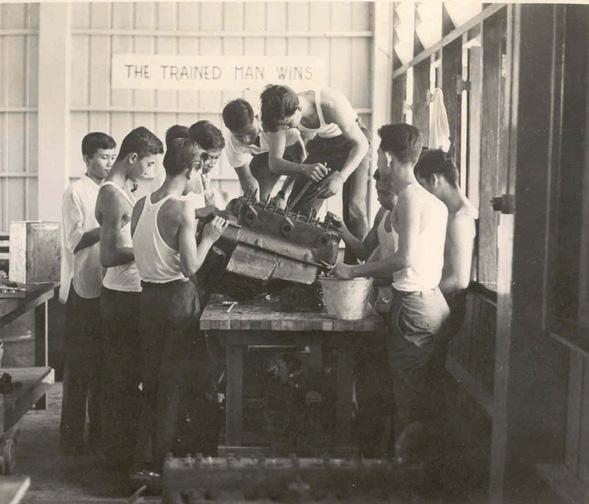
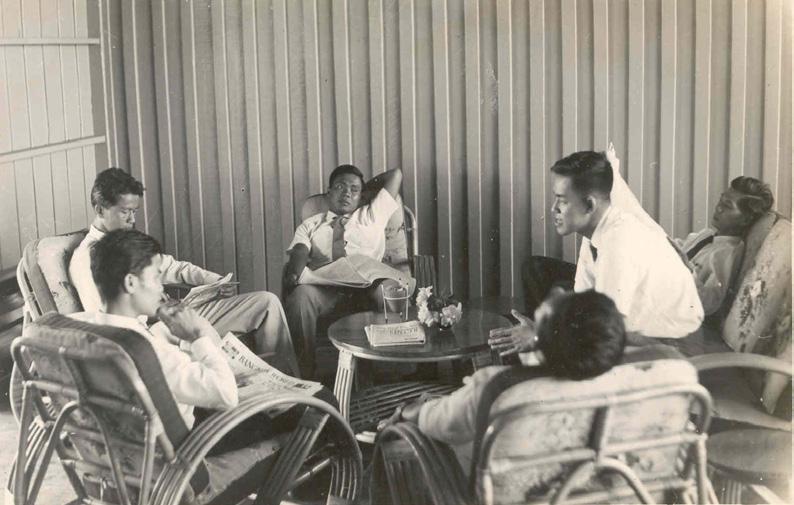
The wooden building was used as a multipurpose facility, serving as classrooms, faculty offices, storage for equipment, a drafting room, and temporary workshops, among other functions.
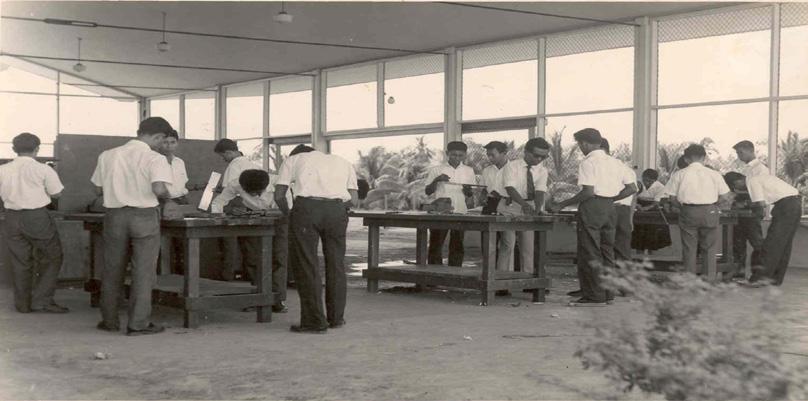
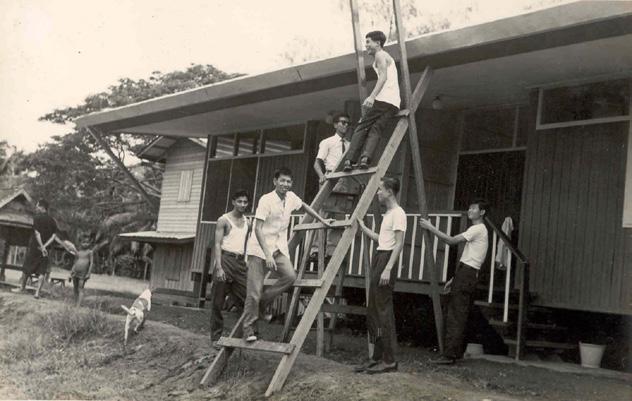
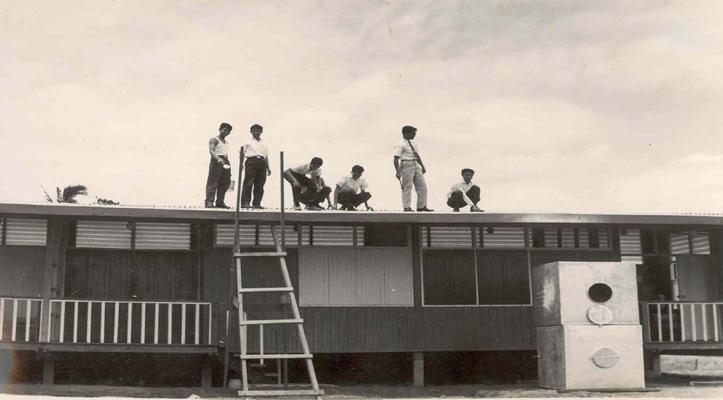
The cafeteria was also used as a workspace. In addition to practicing in the workshops, students were required to carry out practical training outside the classrooms as well.
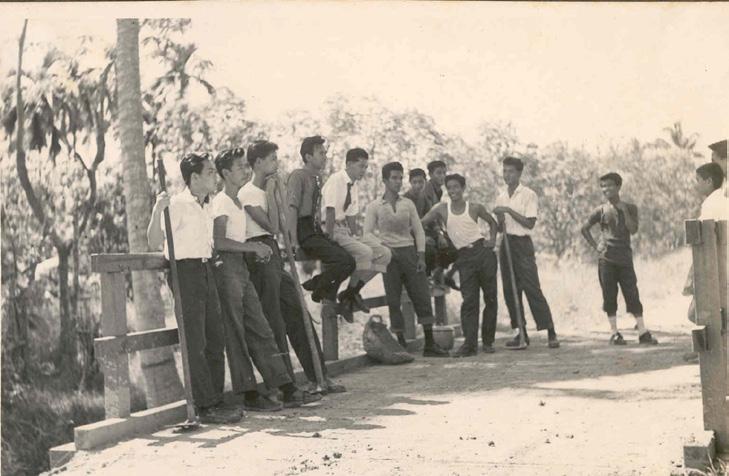
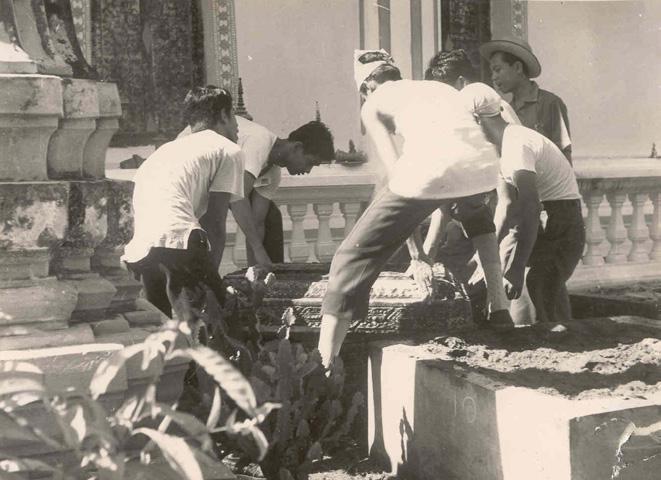
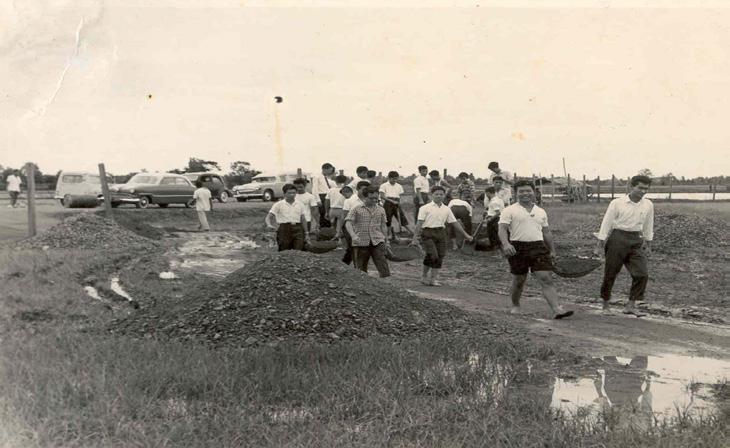
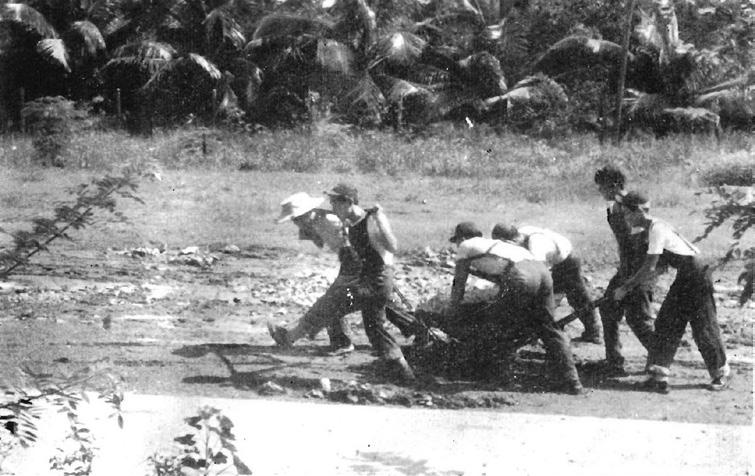
This included helping to develop Pracha Uthit Road and renovate wooden bridges at the invitation of the District Officer of Rat Burana, constructing internal roads within the college, expanding and building faculty housing, installing electrical wiring, creating some equipment, preparing the land for a temporary sports field, and developing Wat Sarod, among other projects. These activities served as valuable practical learning experiences while also benefiting the local community during the early development phase.
June 24, 1960: Approval was granted for the construction of a temporary cafeteria for the college, covering an area of 144 square meters.
July 7, 1960: The first Teacher’s Day ceremony was held.
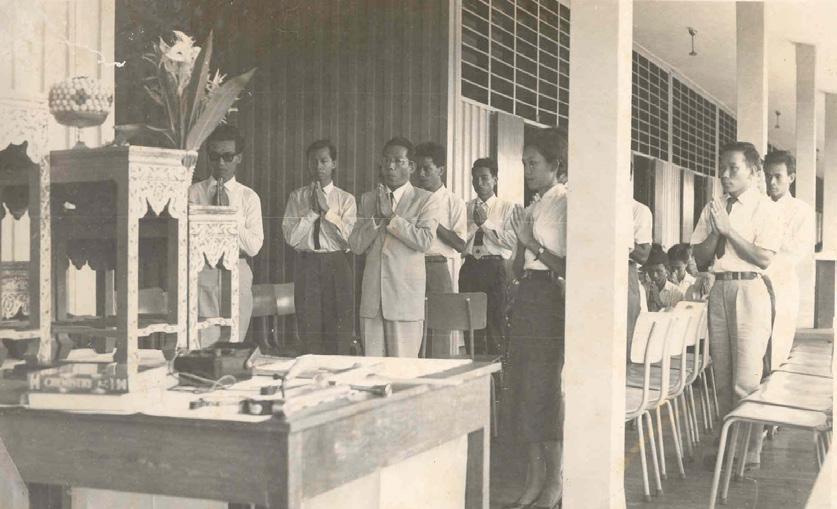
August 1960: Approval was granted for the installation of the first telephone at Thonburi Technical College.
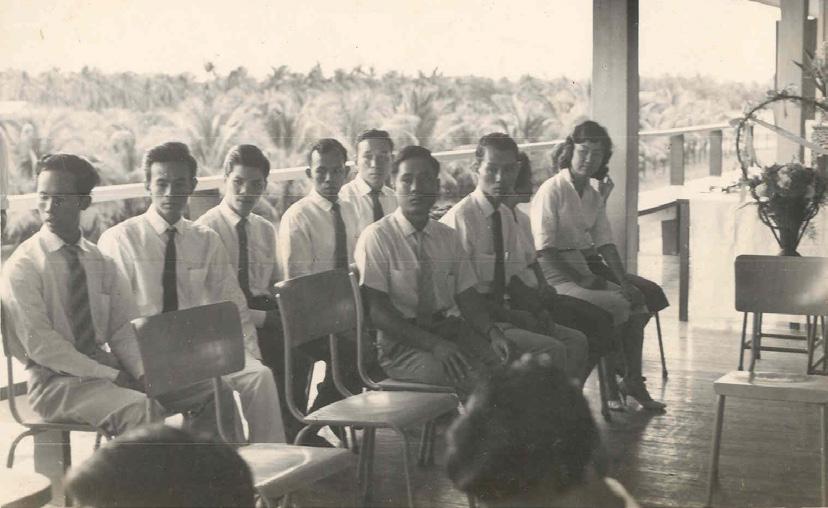
September 12, 1960
On September 12-15, 1960, Director-General Sanan Sumit invited Mr. Stanley Nelson, a technical expert from UNESCO, to assess the situation at Thonburi Technical College. Mr. Nelson recommended that the college revise its curriculum to offer specialized tracks starting from the first year. He also assisted the college in submitting a Request for Special Fund according to the regulations of the United Nations. During the first year, several construction, repair, renovation, and improvement projects were carried out within the college’s premises, including the following:
- Construction of workshops for mechanical and metalworking, faculty housing, bathrooms, and toilets: 1,910,000 Baht
- Installation of water pipes to the college premises and various buildings: 14,865.80 Baht
- Construction of a boundary fence around the college, approximately 1,360 meters long: 40,786 Baht
- Construction of a temporary cafeteria: 2,880 Baht
- Purchase of gravel and crushed stone for road construction within the college premises: 18,155 Baht
- Renovation of the director’s residence: 5,440 Baht
- Installation of electrical wiring within the college premises: 4,960 Baht
- Construction of a concrete yard and walkway connecting the classrooms to the cafeteria: 32,000 Baht
Transportation and logistics were significant issues that greatly impacted the progress and success of the college’s objectives. Pracha Uthit Road was a dirt road, and there was no public bus service. The college arranged for a shuttle bus service with Thanakorn Transport Co., Ltd. to operate during the morning and evening hours when classes were in session. However, during the rainy season, the road became severely damaged, making it impossible for vehicles to enter. Both faculty and students had to walk to the college, and the use of boats was only possible at high tide, but it consumed a lot of time. The college requested assistance from the Thonburi Province to improve the road, but in the first academic year, the college had to pay for gravel to improve the road at a cost of 114,150 Baht and also had to put in manual labor to help construct it. The poor condition of the road was a significant obstacle to transportation for both students and faculty, as well as the transportation of building materials and equipment, including training materials purchased for educational purposes.
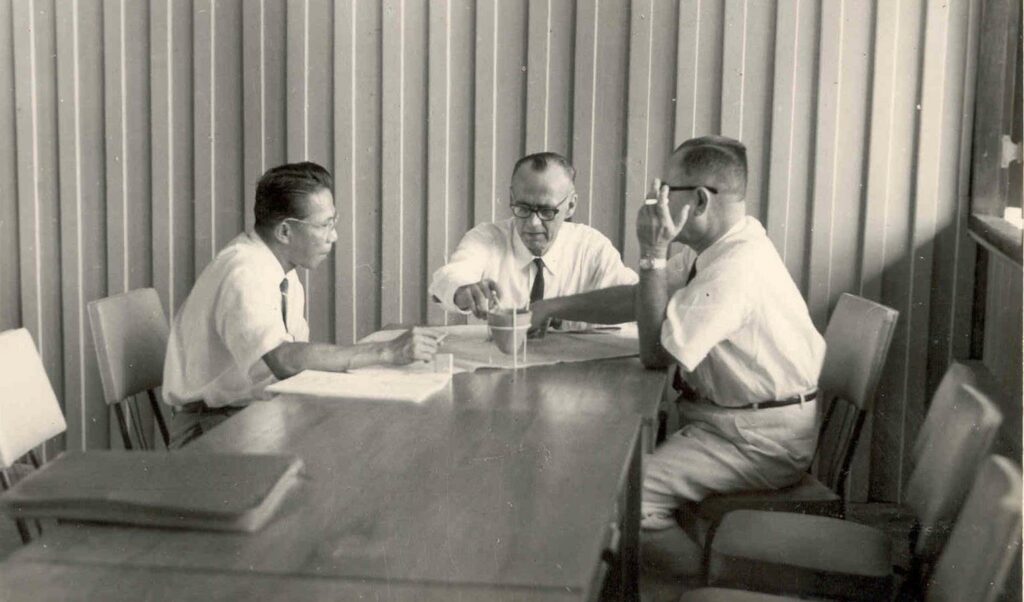
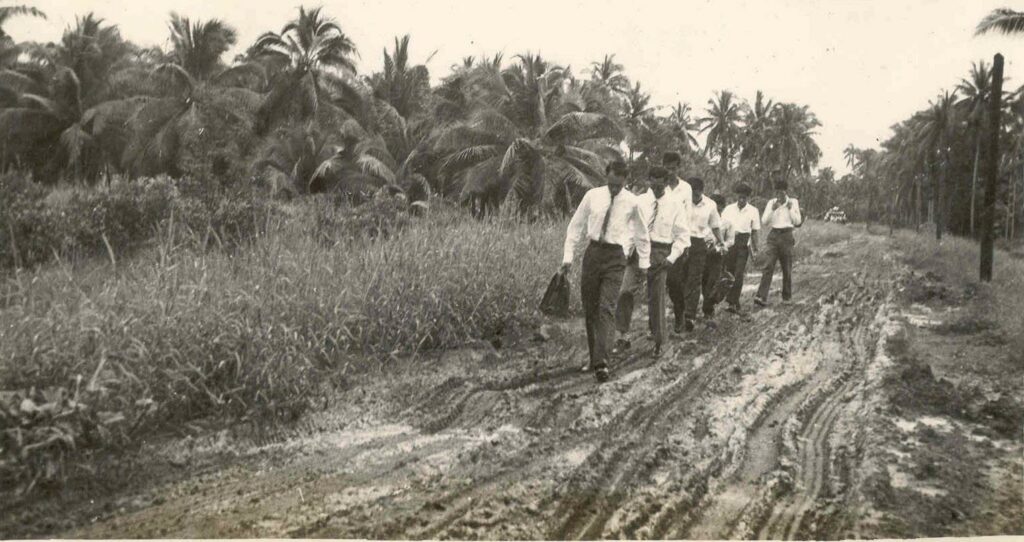
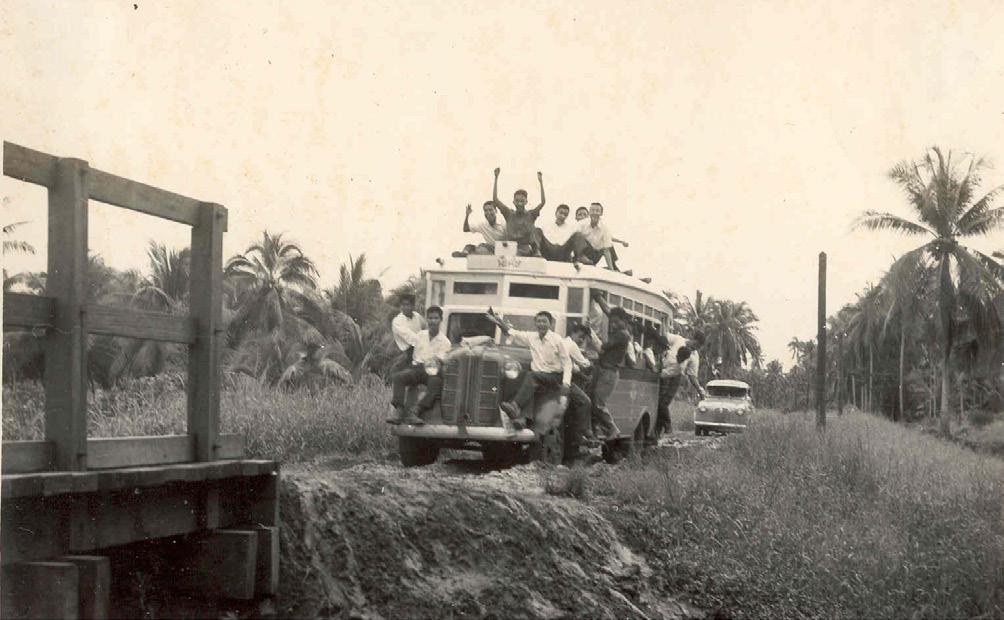
November 1960: The college was donated a Plymouth car (damaged) by the Faculty of Medicine to be used as teaching equipment for the engine mechanics course in the curriculum.
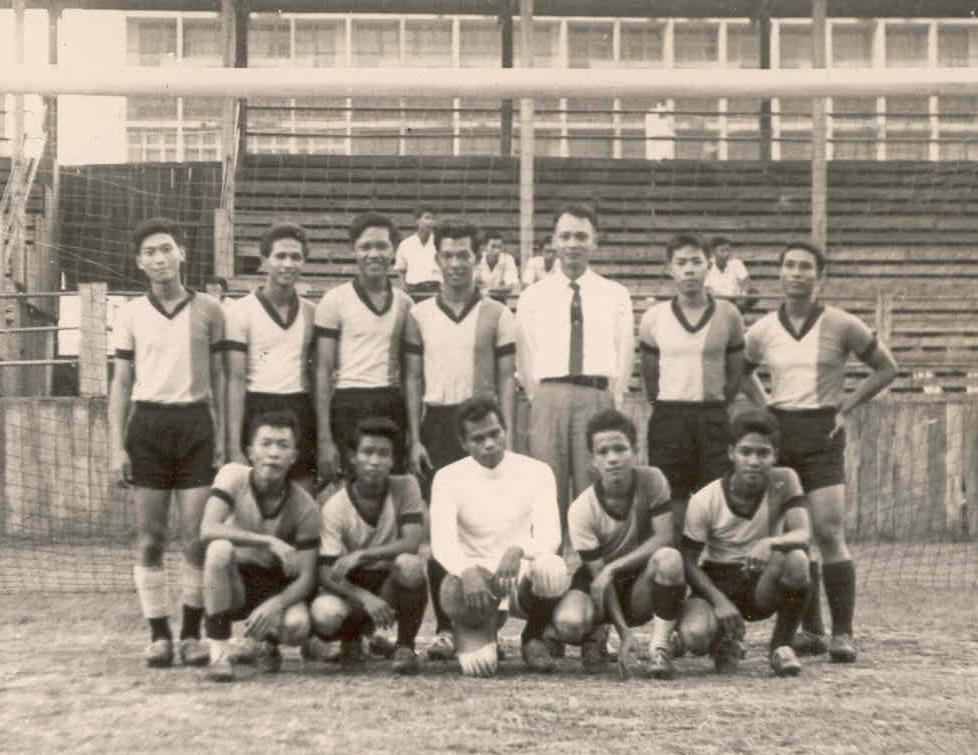
Football was the first sport the college sent students to compete in. “The college had been established for less than a year when it sent students to compete in sports, specifically football. A team was selected, with a limited number of players.”
The seating arrangement included: Manoon Janpradap, Nath Pringthongfu, Thavee Buarod, Ongat Hamubon, Yot Nimsomboon.
The standing row included: Sawat Hongladarom, Kiatchai Booranapat, Somnuek Nakrawong, Theera Jitbangleua, Professor Sawat Chaiyakhuna, Chamapol Prapaktham, and Udom Longam.
1961
February 4, 1961: The college celebrated its 1st anniversary by taking a group photo in front of the building.
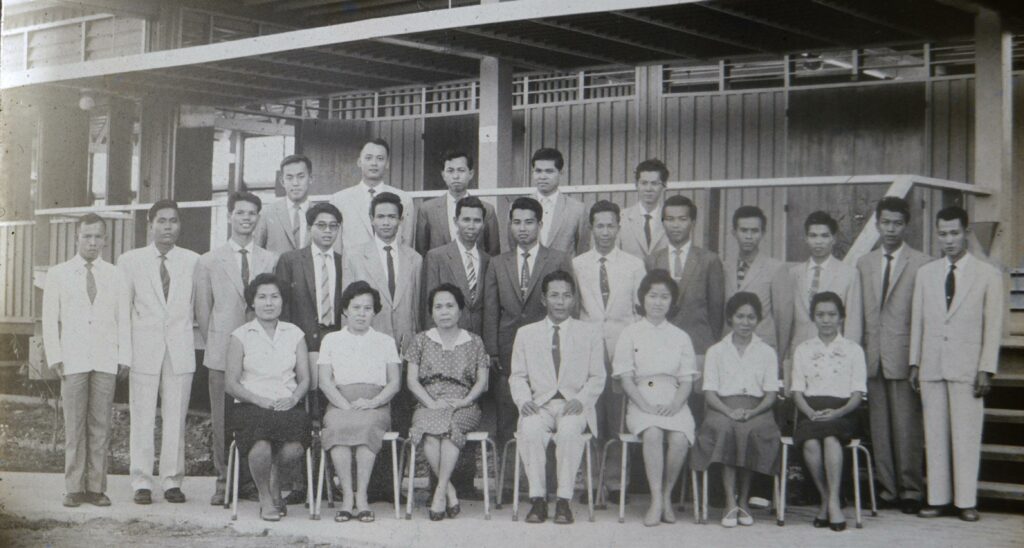
The front row included: Lieutenant Commander Sujitra Phungwuthi, Professor Sutchalew Tanphairoj, Professor Srisawat Minavanit, Professor Prapa Prajaksupanit, Professor Ubon Chantarakamon, Professor Fuengsin Srayutpitak, and Professor Chantana Wattasing.
Middle Row included: Professor Sutham Tewichasri, Professor Uthai Kaewchuang, Professor Somsak Intrakamhaeng at Ratchasima, Professor Praduan Patthachote, Professor Jamnong Chantakarn, Professor Sompong Panyasook, Professor Itthisak Thongkham, Professor Wetchasith Kulkaew, Professor Suchint Maprajong, Professor Sophon Suwannakin, Professor Samak Jaroenphan, Professor Thanong Rungrojdee, Professor Prasat Klaahan.
Back Row included: Professor Phaisal Leelameear, Professor Sawat Chayakhuna, Professor Charoen Wattanasing, Professor Phiphop Sunthornsamai, and Professor Surapong Watabut.
March 4, 1961: Approval was granted for the establishment of the general partnership, Phrapadang Engineering Co., Ltd., for the purpose of drilling artesian wells.
April 10, 1962: Approval was granted for the construction of the entrance gate and guardhouse.
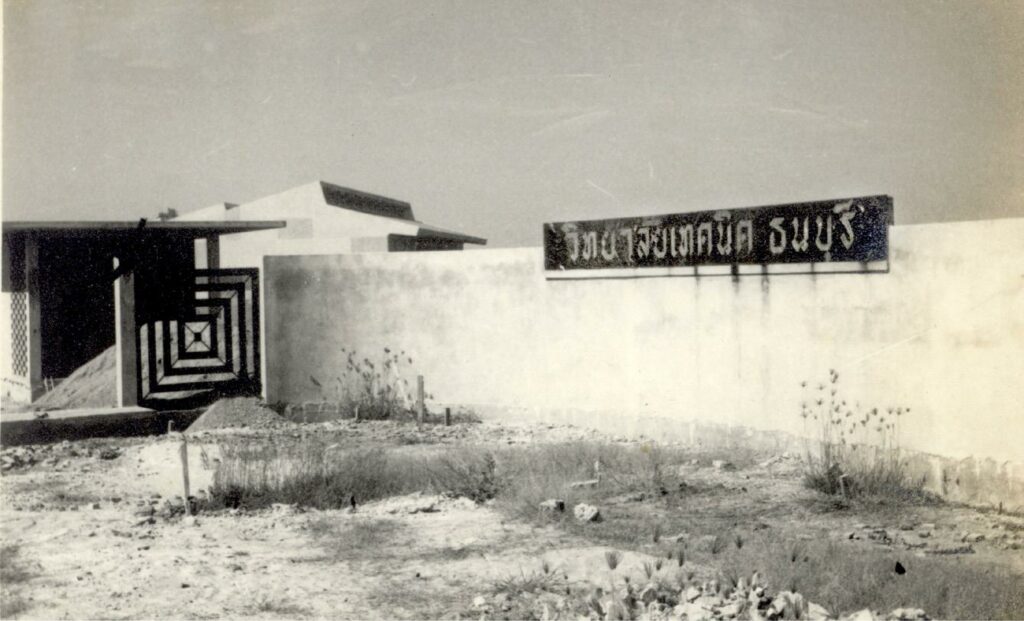
May 1961
The Ministry of Education has approved the new curriculum, which is divided into four main fields of study: construction, electrical, automotive, and metalworking. Students will study these fields separately starting from their first year. Upon completing the 3-year curriculum, they will receive a higher vocational certificate in their chosen field. For returning students, the college has allowed them to select the field they wish to pursue, and the college will consider their subject scores in the decision-making process.
The college announced the recruitment of new students for the year 1961, following the same process as the previous year. However, the location for registration and entrance exams was moved to the Uthen Thawai Construction School. A total of 546 male and 14 female applicants registered, with 219 passing the exams and 29 placed on standby. Only 149 students reported for duty. The college extended the registration deadline and called in some of the standby candidates, increasing the number of enrolled students to 190. The college then announced additional slots based on the lower scores of the applicants, bringing the total number of students to 208. Another day was allowed for late registrations, bringing the final total to 213 students. When combined with 76 returning students who voluntarily continued their studies, the total number of first-year students reached 289. For the second-year students, only 158 chose to continue.
1962
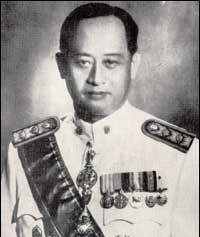
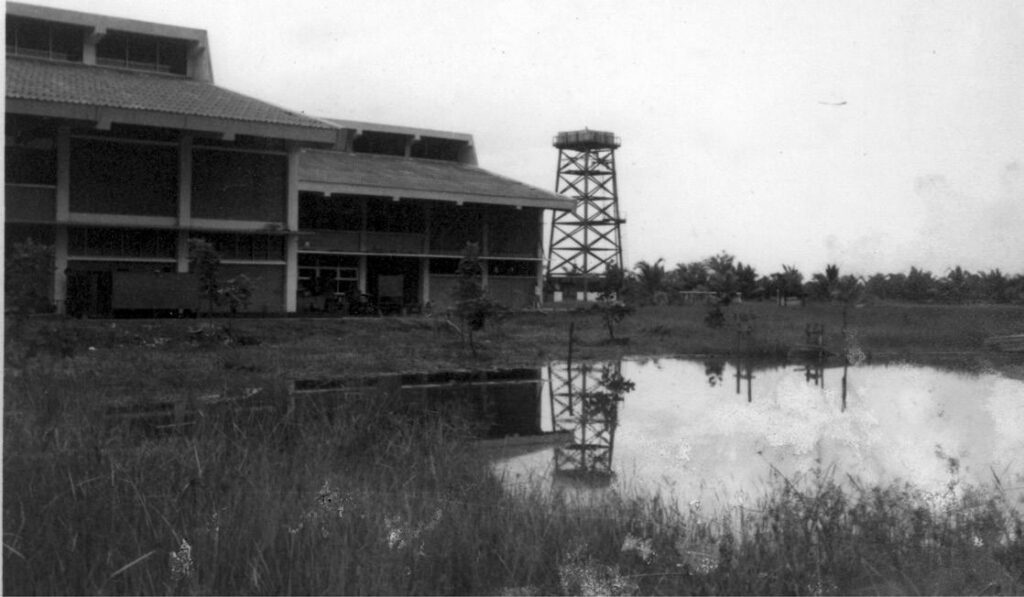
January 1962
– Mr. Sanan Sumit was transferred to the position of Director-General of the Department of Special Education, while Associate Professor Phongsak Worasunthornros, from the Faculty of Engineering at Chulalongkorn University, was appointed as the new Director-General of the Department of Vocational Education.
– The college began using a selection process in collaboration with other universities, with the National Education Council overseeing the implementation.
– The foreign aid project initiated by Director-General Sanan is nearing completion. The college has received funding to build a construction workshop and expand the metalworking workshop.
February 4, 1962: The 2nd anniversary, a group photo taken on the founding day of the college.
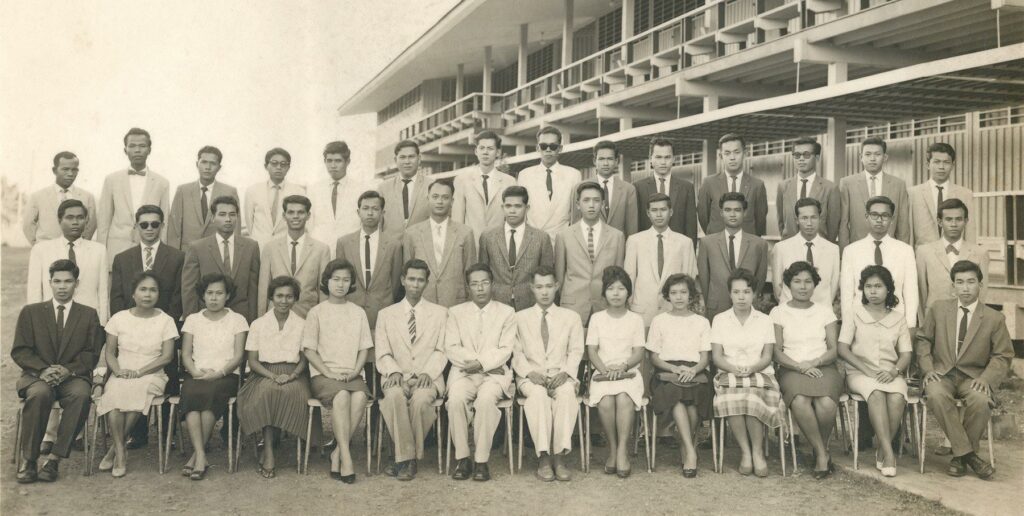
Seated in the photo are: Associate Professor Samak Charoonpan, Associate Professor Srisawat Minawanitch, Associate Professor Sudchelio Tanpairoj, Associate Professor Fuengsin Srayutpitak, Associate Professor Ubol Jantakamon, Associate Professor Sompong Panyasook, Associate Professor Prapha Prajaksuphanit, Associate Professor Prasat Klanhan, Associate Professor Phatthana Hensanghong, Associate Professor Chantana Wattasingh, Associate Professor Emorn Kokkhamkaeng, Lieutenant Commander Sujitra Phungwut, Operator (name unknown) and Associate Professor Suntorn Sukulphon
In the middle row are: Associate Professor Uthai Kaewchuang, Associate Professor Surathep Apayajit, Associate Professor Itthasak Thongkham, Associate Professor Somsak Intrakhamkaeng at Ratchasima, Associate Professor Charoen Wattasingh, Associate Professor Swat Chaiyakhuna, Associate Professor Suntorn Sreeniltha, Associate Professor Chakrapan Chullakes, Associate Professor Phithop Sunthornsamai, Associate Professor Chertchalong Chitchawankit, Associate Professor Vetchasit Kulkiew, Associate Professor Sithsarawut Phuntawee and Associate Professor Sophon Suwanakinthorn
In the back row are: Associate Professor Sutham Thawitchawee, Associate Professor Uthai Phaophu, Associate Professor Phon Phoolas, Associate Professor Praduan Phatchote, Associate Professor Chusak Plianphu, Associate Professor Prayoon Sachat, Associate Professor Surapong Watawut, Associate Professor Jate Chaiyakham, Associate Professor Jamnong Jantakhan, Associate Professor Suriya Boonsong, Associate Professor Phaisan Leelemeer, Associate Professor Sujin Maprajong, Associate Professor Somsak Juangsawasdi and Associate Professor Thanong Rungrojdee
The rainy season of 1962 saw heavier rainfall than in previous years. The only road that was essential for use deteriorated significantly, making it impassable for vehicles. Students and faculty had to walk through the mud for distances of no less than 5 kilometers each day, leading to a high number of absences. According to the recorded statistics, it was noted that…
- September 25: 117 students absent
- September 26: 106 students absent
- September 27: 48 students absent
- September 28: 34 students absent
- September 29: 32 students absent
- October 3: 56 students absent
- October 4: 57 students absent
- October 5: 95 students absent
- October 6: 349 students absent
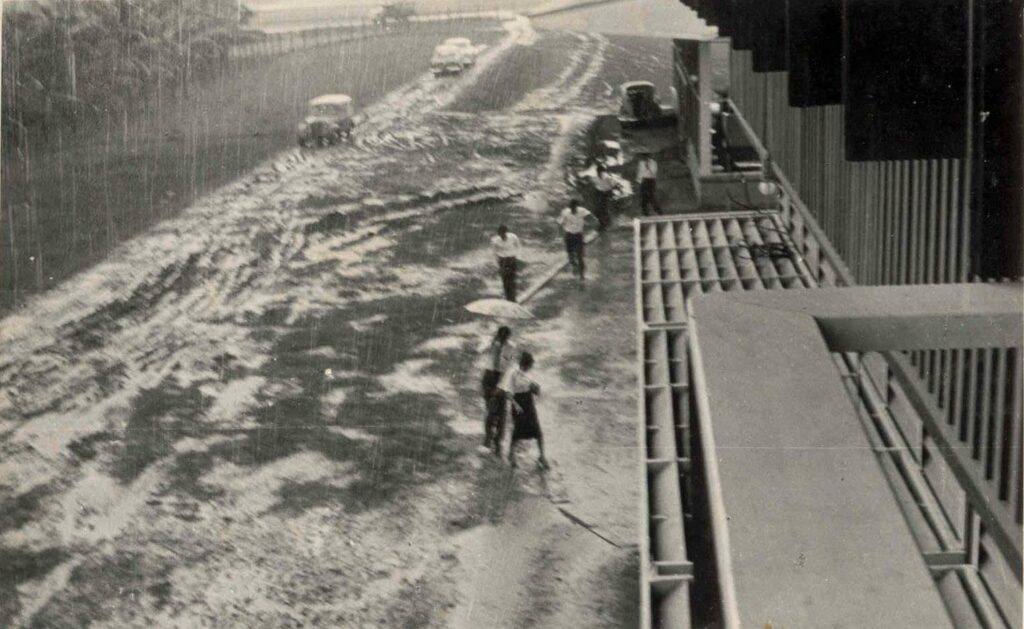
October 9, 1962
On October 9, 1962, the students did not attend the college but instead went to visit His Excellency Prime Minister Field Marshal Sarit Thanarat at the Government House. His Excellency instructed the Department of Public Works to inspect the condition of the road and arrange for temporary repairs. Once the rain had stopped and the road dried, the Department of Public Works sent a vehicle to relevel and resurface the road. This meeting with the Prime Minister led to the construction of the paved road that we still use today.
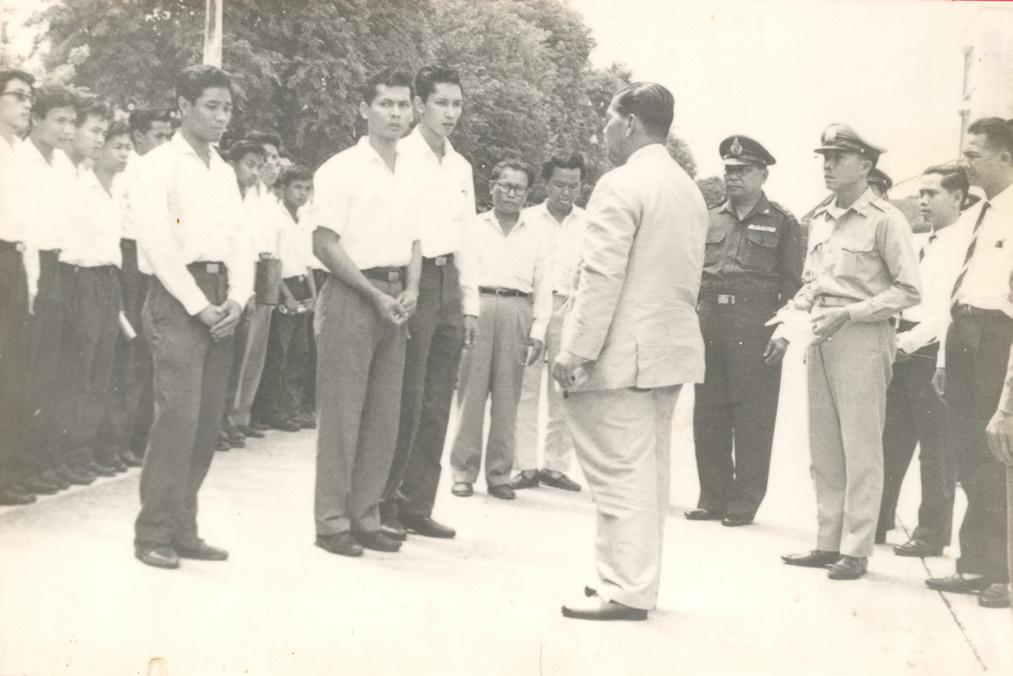
December 19, 1962
The United Nations Development Programme (UNDP) Special Fund, Project 1 (Thonburi Technical Institute Project SF. THA. 7), had a 5-year duration. The assistance was divided into several components: educational equipment, six academic experts, and 11 additional scholarships, totaling an amount of 1,146,957 US dollars. The Thai government was also required to allocate additional funding.
The first head of the expert team was Mr. R.G.P.S. Fairbairn from the United Kingdom.
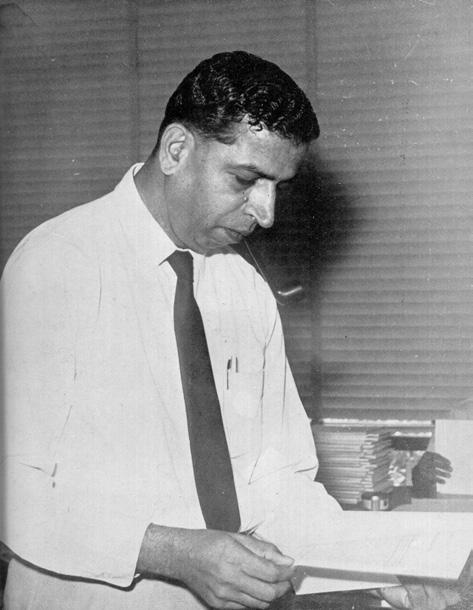
Dr. N.S. Rajan
The first group of faculty members from the college who received scholarships and training abroad were:
- Mr. Uthai Kaewchuang, went to the United Kingdom
- Mr. Charoen Wattasingh, went to the United Kingdom
- Mr. Suthanthorn Sukulphon, went to the United Kingdom
- Miss Fuengsin Srayutpitak, went to the United Kingdom
- Mr. Chertchalong Chitchawankit, went to Denmark
The first group of experts included:
- Mr. D. Picken, Electrical Power Expert (worked from October 8, 1962 to September 3, 1963)
- Dr. N.S. Rajan, Special Expert
- Mr. H. Bange, Construction Expert
- Mr. S.J. Martin, Metalworking Expert
- Mr. K. Stephen, Electrical Power Expert
When the first group of experts completed their terms and the head of the expert team reached retirement age, Dr. N.S. Rajan became the new head of the expert team. New experts were also introduced:
- Mr. H. Hansen, Mechanical Expert
- Mr. I. Davies, Metalworking Expert
- Mr. L. Dellenborg, Construction Expert
- Dr. Tha Hla, General Studies Expert
- Mr. R.D. Drury, Electrical Power Expert
1963
March 1963 The first batch of graduates from the Vocational Certificate (V.C.) program consisted of 119 students, including 36 construction technicians, 41 electrical technicians, 31 mechanical technicians, and 11 metalworking technicians.
Academic Year 1963 The Ministry of Education approved the implementation of a new set of regulations for the college.
- The administration was divided into three departments: Academic Affairs, Services, and Administration.
- The academic system was changed to a two-semester format, with class hours set from 8:30 AM to 4:35 PM.
- The updated curriculum was introduced.
- The credit system was implemented.
- The Academic Affairs Department proposed a project to improve the qualifications of faculty members by selecting certain instructors to undergo training at industrial factories and by offering basic courses such as English (in addition to hiring foreign instructors at the college, a team was also sent to study with HRH Princess Nimmasi Amranand at the Civil Aviation Training Center for two weeks), Mathematics, and Physics.
In terms of college management, the following appointments were made:
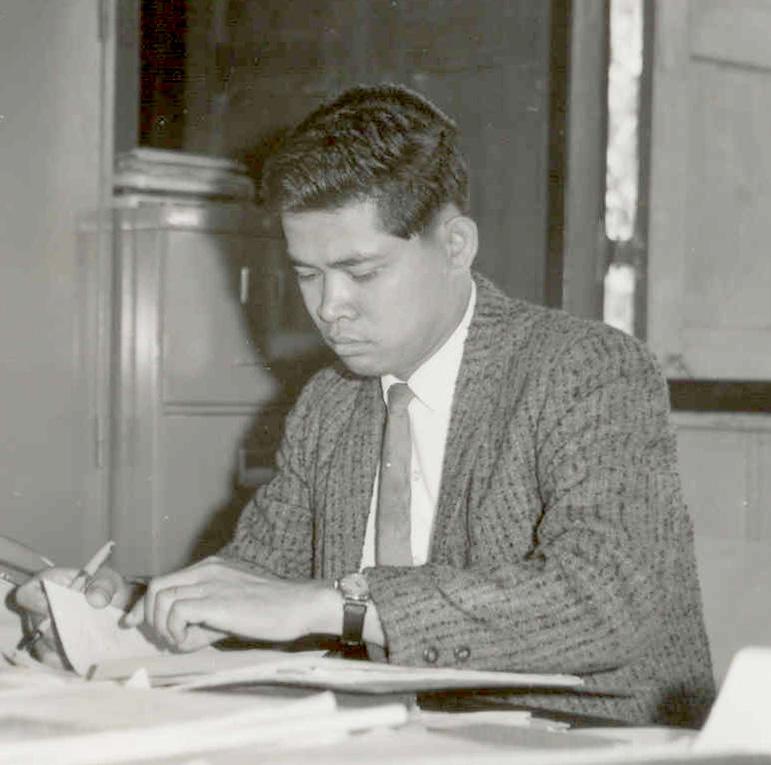
Mr. Suntorn Sreeniltha
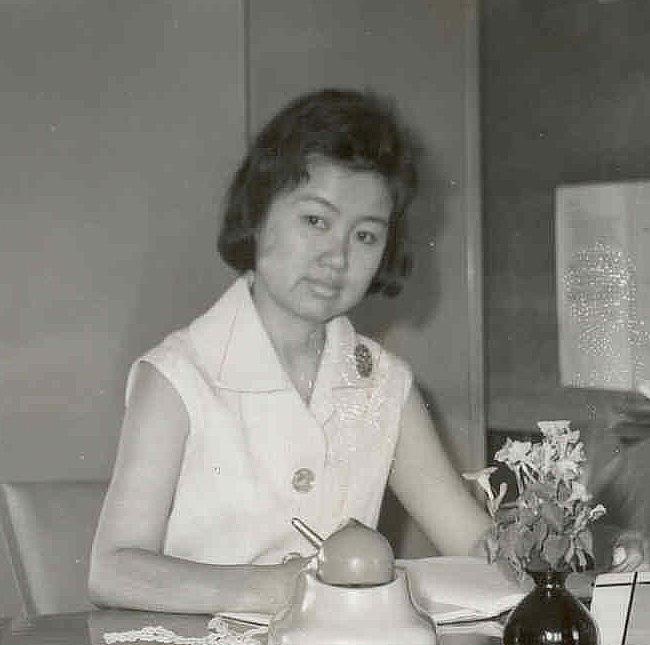
Miss Ubol Jantakamon
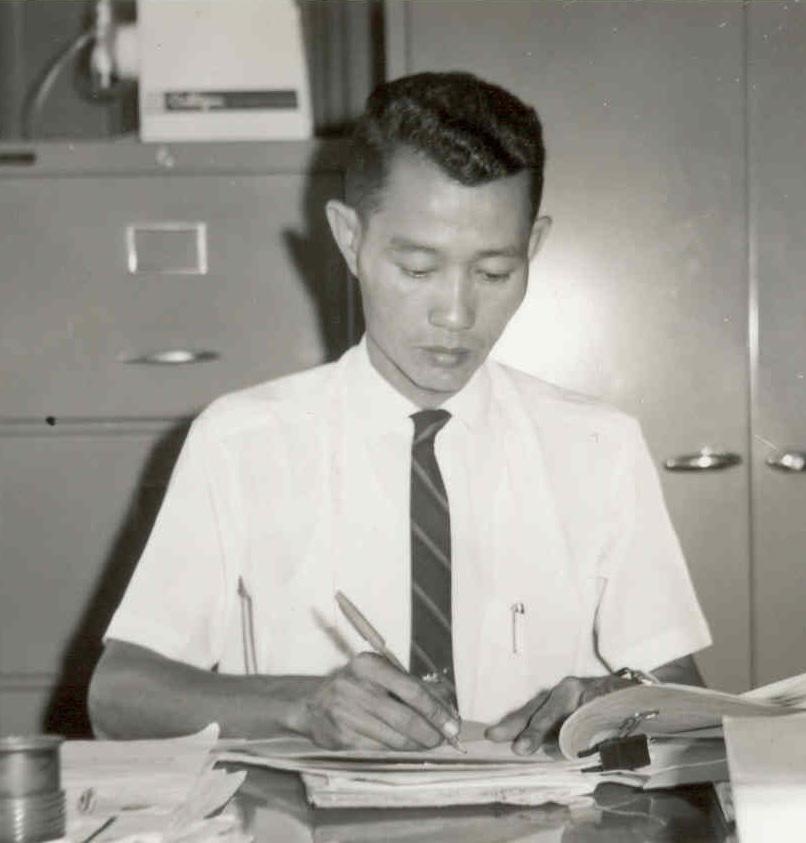
Mr. Prasat Klanhan
1. Academic Affairs Department
- Head of Department: Mr. Suntorn Sreeniltha
- Head of Mechanical Engineering Department: Mr. Suntorn Sreeniltha
- Head of Electrical Engineering Department: Acting by the College Director
(Dr. Nat Tantawirul was appointed as the Head of the Electrical Engineering Department from February 2, 1964) - Head of Civil Engineering Department: Mr. Sophon Suwannakinthorn (Acting)
- Head of General Studies Department: Mr. Uthai Phaophu
- Head of Automotive Engineering Section: Mr. Prayoon Sachat
- Head of Metalworking Section: Mr. Sujin Maprajong
- Head of Electrical Power Section: Mr. Samak Charoonpan
- Head of Construction Section: Mrs. Chantana Wattasingh
- Head of Mathematics and Science Section: Mrs. Klaochai Boonyasing
- Head of Language and Social Studies Section: Mrs. Jarunee Sapphamee
2. Services Department
- Head of Department: Miss Ubol Jantakamon
- Head of Registration Section: Mr. Somsak Juangsawasdi
- Head of Guidance Section: Acting by the Head of the Services Department
- Head of Public Relations Section: Mr. Somsak Juangsawasdi
- Head of Welfare Section: Lieutenant Commander Sujitra Phungwut
- Head of Printing and Documentation Section: Mr. Praduan Phatchote
- Head of Equipment and Research Section: Miss Emorn Kokkhamkaeng
3. Administration Department
- Head of Department: Mr. Prasat Klanhan
- Head of Secretariat Section: Miss Jintana Phromman
- Head of Finance Section: Mr. Prasat Klanhan
- Head of Building and Facilities Section: Miss Somsri Kanchanasut
- Head of Personnel Section: Acting by the Head of the Administration Department
1964
July 15, 1964 The Ministry of Education appointed a coordination committee according to the Plan of Operation of the United Nations Special Fund, consisting of:
- Permanent Secretary of the Ministry of Education – Chairman
- Director-General of the Department of Vocational Education – Vice Chairman
- Director of the Foreign Relations Division – Committee Member
- Head of the UNTAB Office – Committee Member
- Head of the UNESCO Office – Committee Member
- Representative of the Department of International Organizations – Committee Member
- Head of the UNESCO Expert at the College – Committee Member
- Director of Thonburi Technical College – Committee Member
- Head of the Technical College Division – Committee Member and Secretary
– The group of experts recommended that the college establish a two-year advanced technical teacher training program, building upon the existing curriculum, to help address the shortage of qualified technical instructors at vocational colleges nationwide. Additionally, the experts suggested that the college seek assistance from the UNDP to support the teacher training program. The college followed through with the recommendations and appointed Dr. Paiboon Hangsapruk as the head of the Mechanical Engineering Department and Dr. Harit Sutabut as the head of the Metalworking Section. During this academic year, the college completed the construction of the Science Building (Building 2), a casting workshop, an electrical engineering workshop, and the extension of the construction workshop.
– The first group of faculty members who went abroad returned, and the second group gradually departed for further studies. The individuals in this group included:
- Mr. Sujin Maprajong – Went to New Zealand
- The Director of the College – Went to the United States
- Mr. Jate Chaiyakham – Went to the Republic of China (Taiwan)
- Mr. Sithsarawut Phuntawee – Went to the United States
- Mr. Prayoon Sachat – Went to New Zealand
- Mr. Chusak Plianphu – Went to the United Kingdom
1965
– In the academic year 1965, the college appointed Mr. Wutthit Phanthumanawin as the head of the General Studies Department.
– The Ministry of Education approved the Advanced Technical Teacher Training Program (ATTP) and established the Department of Advanced Technical Teacher Training, starting with the Automotive Engineering and Metalworking sections. In the academic year 1966, the ATTP expanded to include the Civil Engineering and Electrical Engineering sections.
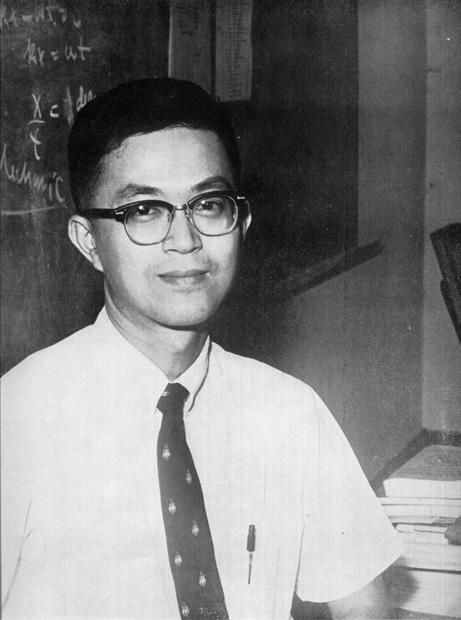
Mr. Wutthit Phanthumanawin
November 1965
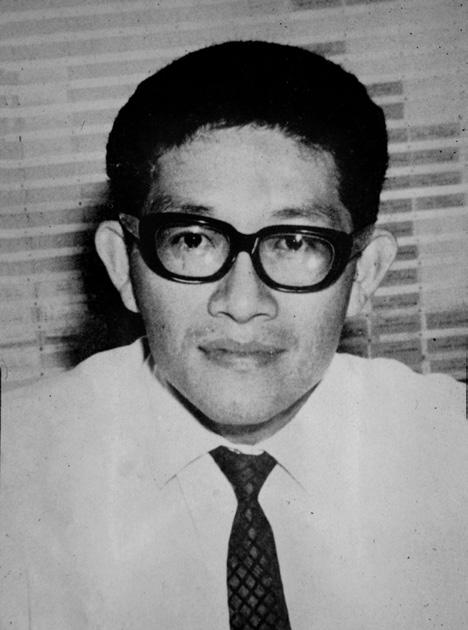
Dr. Paiboon Hangsapruk
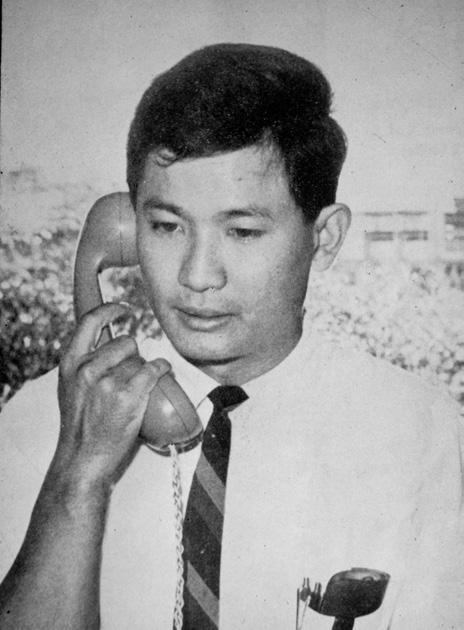
Dr. Harit Sutabut
The Head of the Academic Affairs Department was transferred to become the Head of the Machinery Services Division at the Department of Vocational Education. The college appointed Dr. Paiboon Hangsapruk as the new Head of the Academic Affairs Department and Dr. Harit Sutabut as the Head of the Mechanical Engineering Department.
The group of experts recommended that the college request funding for the construction of dormitories for students in the teacher training program. The college successfully secured a budget of 2,000,000 Baht in the 1967 fiscal year to carry out this project.
1966
In the academic year 1966, the college began offering the Civil Engineering and Electrical Engineering programs. Additionally, it opened the opportunity for graduates with a Vocational Certificate (V.C.) from other technical colleges to apply and compete for admission. During this year, the college also completed the construction of a welding and sheet metal workshop, as well as an administration building.
April 15, 1966 – The Coordination Committee, chaired by the Permanent Secretary of the Ministry of Education, Mr. Apai Chantawimon, resolved that Thonburi Technical College should draft a proposal for the establishment of Thonburi Institute of Technology, based on the recommendations from the college’s administration and the UNESCO experts.
In response, the college appointed a committee to draft the proposal, consisting of:
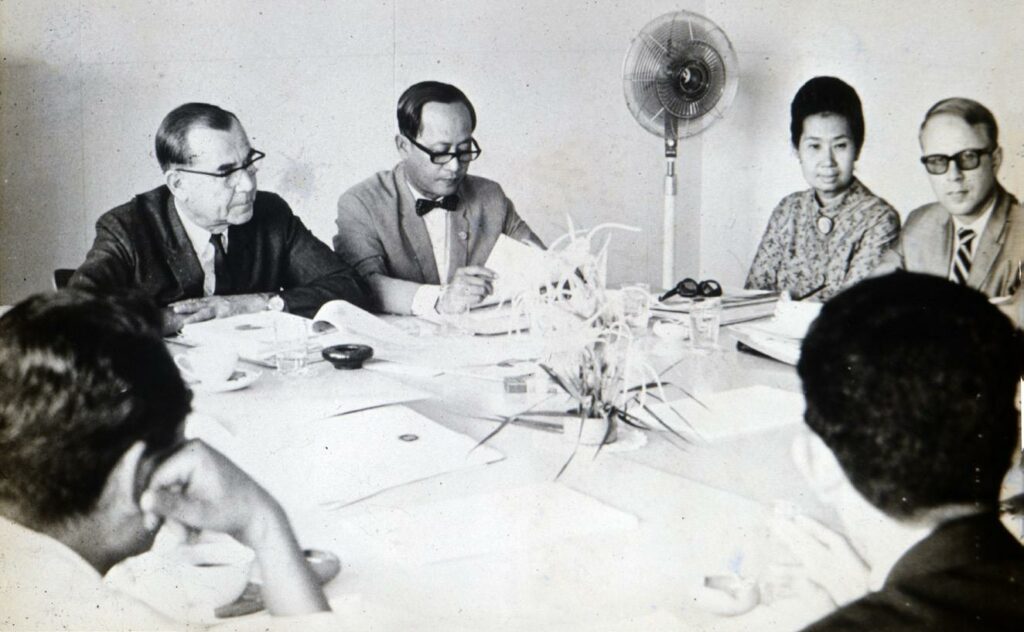
Dr. Harit Sutabut – Chairman
Dr. N.S. Rajan – Vice Chairman
Mr. Suntorn Sreeniltha – Committee Member
Dr. Paiboon Hangsapruk – Committee Member
Dr. Nat Tantawirul – Committee Member
Mr. Charoen Wattasingh – Committee Member
Dr. Preeda Vibulsawat – Committee Member
Miss Ubol Jantakamon – Committee Member
Dr. Tha Hla – Committee Member
Mr. H. Hansen – Committee Member
Mr. I. Davies – Committee Member
Mr. L. Dellenborg – Committee Member
Mr. B.G. Dahlborg – Committee Member
Mr. R.D. Drury – Committee Member
Mr. Wutthit Phanthumanawin – Committee Member and Secretary
September 1, 1966 – The UNDP began its second assistance project for the college, named the Technical Training Project SF. THA. 22, starting on September 1, 1966. The nature of the assistance was similar to the first project, with a 4-year duration and a total funding of 935,100 USD. The focus was on producing high-quality technical teachers for placement in vocational education institutions across the country.
The new team of experts for THA 22 included:
1. Dr. Tha Hla – Head of the Team
2. Mr. G.J. de Morree – Expert in Mechanical Engineering
3. Mr. R.P. Anthony – Expert in Production Technology
4. Mr. H.N. Bange – Expert in Construction
5. Mr. B.G. Dahlborg – Expert in Electrical Engineering
6. Dr. M.P. Varshney – Expert in Electronics
7. Prof. L.J. Wierzbicki – Expert in Drawing and Design
8. Mr. William Dickinson – Expert in Technical Education
9. Mr. I. Davies – Expert in Production Technology
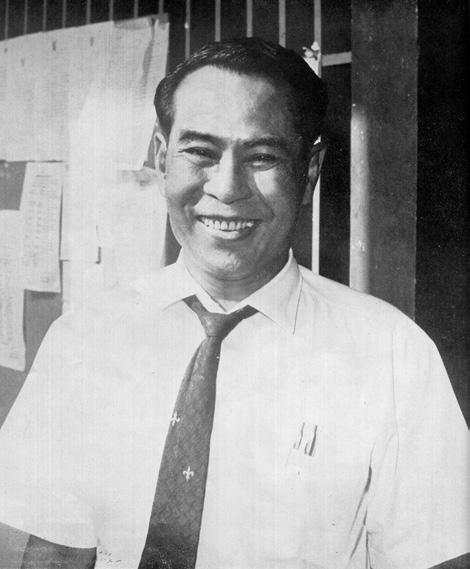
Dr. Tha Hla
1967
February 14, 1967 – The Ministry of Education approved the proposal to change the name of the Metalworking Department to the Production Technology Department, as recommended by the college.
June 12, 1967 – The college proposed the “Thonburi Institute of Technology” project, expanding the curriculum to a 5-year program following the completion of Grade 10 (M.5). The Ministry of Education approved the principle of the proposal on October 3, 1967.
In the academic year 1967, the Department of Civil Engineering offered a special course on “Road Construction Techniques” for 8 government officials from Laos, under the sponsorship of the USOM (United States Operations Mission, Bangkok), from June 5 to October 7, 1967.
As the THA 7 project was nearing completion, a survey revealed that there were remaining funds sufficient to provide a short-term scholarship for one year. The Director suggested to the experts that the scholarship be allocated for the field of Library Science, to build a strong foundation for future academic services for various projects at the university. The Head of the Equipment and Research Department received this scholarship to pursue a Master’s degree at Wayne State University, USA, on June 19, 1967.
The scholarship recipients under the THA 22 project were:
- Miss Ubol Jantakamol – United States of America
- Mr. Uthai Phaophu – United States of America
- Mr. Phairoj Tiranathanakul – United States of America
- Mr. Jaran Thananchai – United States of America
- Mr. Maitree Phachadech Suwat – United States of America
- Mr. Kasem Lertrat – United States of America
- Mr. Sopon Suwannakin – Australia
1968
On July 13, 1968, the Cabinet approved the Thonburi Institute of Technology project, but with a new name, “Thonburi Technological College.” The administration of Thonburi Technical College took on the responsibility of drafting the “Thonburi Technological College Act” and proposed the draft legislation.
On July 16, 1968, the Department of Vocational Education appointed an advisory committee for Thonburi Technical College, consisting of experts from the industrial sector and relevant government agencies involved in the workforce development plan as follows:
- Mr. Thian Achakul, Director-General of the Department of Labor
- Lt. Col. Chup Siricharoen, Engineer at Bangkok Agricultural Products and Silos Ltd.
- Mr. Samran Wannapruek, Personnel Manager at Lever Brothers (Thailand) Ltd.
- Mr. Kachorn Sukhpanit, Technical Advisor at Philco-Ford Corporation
- Mr. Patipat Arayasat, Deputy Governor for Administration at Yanhee Electricity Authority
- Dr. Weerachai Suwanakorn, Director and Manager at Weerachai and Company
- Mr. Suntorn Srinilta, Head of the Machinery Services Division at the Department of Vocational Education
- Dr. PhaiBoon Hangsapruk, Head of the Academic Division at Thonburi Technical College, who served as a committee member and secretary.
In addition to the advisory committee, the college also has an administrative board, which consists of:
- The Director as the Chairman
- The Deputy Director as the Vice Chairman
- The Head of the Academic Division as a Committee Member
- The Head of the Service Division as a Committee Member
- Dr. Haris Sutadubutr as a Committee Member
- Mr. Charoen Watthasing as a Committee Member
- Mrs. Aemorn Srinilta as a Committee Member
- Mrs. Nanta Kowong as a Committee Member
- The Head of the Administrative Division as a Committee Member and Secretary.
On July 23, 1968, the Cabinet reviewed the Thonburi Institute of Technology project and approved its establishment, but with a new name: “Thonburi Technical College.” The Cabinet also decided to incorporate Thai-German Technical College and the Telecommunications College under the same administration.
Director-General Phongsak called a meeting with the Thonburi Technical College administration to take responsibility for the implementation of the project. On Friday, August 2, 1968, the draft of the bill was submitted to the Department of Vocational Education.
After two meetings of the committee drafting the “Thonburi Technical College Act” at the ministry level, the Director-General of the Department of Vocational Education convened another two meetings with the directors and heads of the academic divisions from all three colleges to review the draft further. After these deliberations, the draft was presented for a third meeting at the ministry level, where it was approved on November 19, 1968. The draft was then submitted to legal experts at the ministry for final revisions before being presented to the Cabinet for approval.
At the beginning of the 1969 academic year, students accused the head of the administrative division of not listening to their explanations and facts. The department issued an urgent order to transfer the head of the administrative division to the department without appointing an investigation committee. Once the situation settled, Director Mr. Phapa Prajaksubanithi requested to resign from his position, and his resignation was approved by the Minister of Education on September 10, 1969.
The heads of various departments at the time of the new director’s appointment were as follows:
- Dr. PhaiBoon Hangsapruk – Acting Director (Special Grade)
- Mr. Sompong Panyasuk – Deputy Director
- Dr. Hris Sutatabut – Head of Academic Affairs and Head of the Department of Mechanical Engineering
- Mr. Uthai Kaewchuang – Head of the Department of Automotive Engineering
- Mr. Sujin Maprajong – Head of the Department of Production Technology
- Mr. Praphan Neungsikkha-pian – Head of the Department of Electrical Engineering and Acting Head of the Electrical Power Engineering Department
- Mr. Chusak Pleanchu – Acting Head of the Electronics Department
- Mr. Charoen Watthasing – Head of the Department of Civil Engineering
- Mr. Uthai Phaepoo – Head of the Department of Construction Engineering
- Mr. Sommai Seemakun – Head of the Advanced Technical Teacher Training Program
- Mr. Sompong Panyasuk – Acting Head of the General Studies Department
- Mrs. Khorjai Boonyasing – Head of the Department of Mathematics and Science
- Mrs. Nanta Kowong – Head of the Department of Languages and Social Studies
- Mr. Seree Sukasem – Head of Administrative Affairs
- Mr. Prachuap Sapsoong – Head of the Financial Department
- Mr. Phanom Phainai – Head of the Document Section
- Mr. Thawatchai Nakphum – Head of the Human Resources Department
- Miss Chalermwan Chuthai – Head of the Building and Facilities Department
- Miss Phayao Jancharoen – Head of the Accounting Department
- Mr. Surathep Apaiyajit – Head of the Materials and Equipment Department
- Mrs. Ubon Chantakamon – Head of the Service Division and Acting Head of the Public Relations Department
- Mr. Somsak Juangsawat – Head of the Welfare Department
- Lieutenant Commander Sujittra Phungwuth – Head of the Welfare Department
- Mr. Wut Inkaew – Head of the Printing and Documentation Department
- Mrs. Amorn Sreeniltha – Head of the Library Department and Acting Head of the Audiovisual Department
- Mrs. Nalinee Kraikunhasai – Head of the Educational Research Department
- Mr. Phayun Kettukrai – Head of the Dormitory Department
The Executive Committee was also reshuffled according to the new positions, with additional members as follows:
- Mr. Uthai Phaophu
- Mr. Sommai Seemakul
- Mr. Prapan Neungsikkapian
- Mr. Santi Patsador
- Dr. Preeda Vibulsawat
1969
In June 1969, the Equipment and Research Department moved from the wooden building to operate in a separate two-story building. Mrs. Emor Srinintha was appointed as the head of the department.
On September 10, 1969, the Director of the College was granted approval to resign from government service. Mr. Sompong Panyasuk continued as the Deputy Director as before, and Dr. Harris Sutabut was appointed as the Head of the Academic Affairs Department in addition to his other responsibilities.
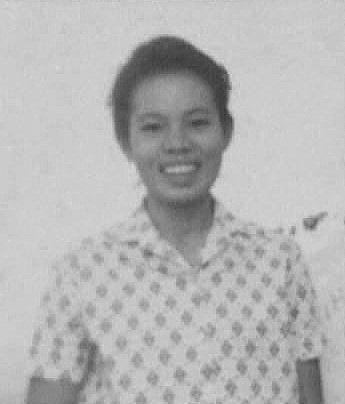
อาจารย์เอมอร ศรีนิลทา
1970
On January 13, 1970, the Cabinet voted to approve the principle of the proposed draft bill, maintaining the name “Institute of Technology” as it was. However, they required the draft to be amended to clearly specify that the lower-than-degree level education in the three existing colleges would continue to operate. Additionally, for those wishing to pursue a degree in education, candidates would be selected from those who had graduated from the aforementioned advanced vocational level with outstanding academic performance and the appropriate qualifications.
On May 28, 1970, King Mongkut’s Institute of Technology Thonburi was granted royal permission to use the name “King Mongkut” as the institution’s official name, with the English name “King Mongkut’s Institute of Technology.”
On September 7, 1970, the Council of State completed the revision of the draft King Mongkut’s Institute of Technology Act and submitted it to the Cabinet. The Cabinet approved the principle the following day and forwarded the matter to the Social Action Party for review by the party’s education committee.
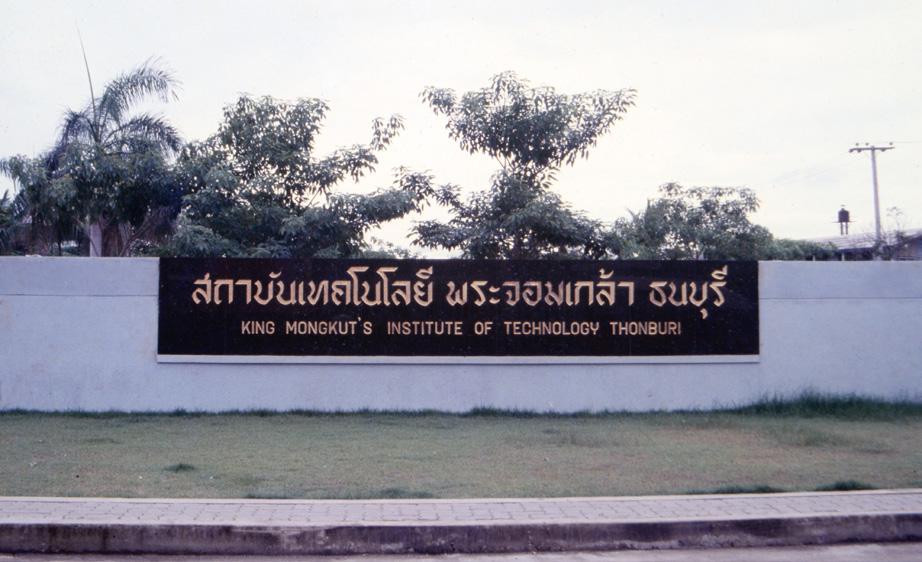
On February 4, 1971, the Cabinet proposed the draft King Mongkut’s Institute of Technology Act to the House of Representatives, which reviewed and approved the draft in its meeting No. 10/1971 (extraordinary session). This coincided with the anniversary of the founding of Thonburi Technical College. The draft was then sent to the Education, Public Health, and Public Works Committee for further consideration. After the committee completed its review, the Cabinet presented the draft to the House of Representatives in its meeting No. 13/1971 (extraordinary session) on February 18, 1971. The meeting voted in favor of the draft and forwarded it to the Senate for further consideration. The Senate received the draft on February 19, 1971.
After a 5-year process, the King Mongkut’s Institute of Technology project was successfully realized. The King Mongkut’s Institute of Technology Act (Version 1) was published in the Royal Gazette, Special Edition, Volume 88, Issue 43 on April 23, 1971. The institution was established as a department under the Ministry of Education. The key principle was to produce vocational education teachers at the degree level and provide education in technology and science, both at sub-degree and degree levels.
This Act granted those who had obtained a higher technical certificate from Thonburi Technical College, among others, prior to the enforcement of this law, the same rights and qualifications as those holding a degree according to this Act. This was particularly significant, as it had a great impact on the professional status of engineers.
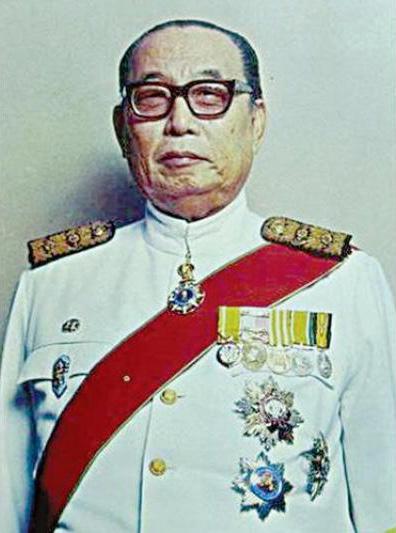
Mr. Sukit Nimmannhemin
Section 40 of the King Mongkut’s Institute of Technology Act (Version 1) states: “In the initial period, before the appointment of the President, Vice-President, Deans, and Head of the Office of the President, the Institute Council shall consist of the Minister of Education as the Chairman of the Institute Council, the Permanent Secretary of the Ministry of Education as the Vice-Chairman, the Director-General of the Department of Vocational Education as a member of the Institute Council by virtue of the position, and appointed distinguished members of the Institute Council, with no fewer than four and no more than nine members, as well as the Director-General of the Department of Vocational Education serving as the Secretary of the Institute Council.”
Therefore, the first Institute Council consisted of:
1. Mr. Sukit Nimmannhemin, Chairman of the Institute Council
2. Mr. Buntin Attakorn, Vice-Chairman of the Institute Council
3. Rear Admiral Chalee Sindhusophon, Distinguished Member of the Institute Council
4. Major General Boonruen Bua-jaroen, Distinguished Member of the Institute Council
5. Air Vice Marshal Wimol Wiriya-wit, Distinguished Member of the Institute Council
6. Mr. Jang Rattanarat, Distinguished Member of the Institute Council
7. Mr. Damrong Chalawijarn, Distinguished Member of the Institute Council
8. Phra Akkob Yantakrit, Distinguished Member of the Institute Council
9. Mr. Phongsak Worasuntarosath, Distinguished Member of the Institute Council
At this turning point, King Mongkut’s Institute of Technology Thonburi (KMITT) organized its academic departments into the following categories:
- Civil Engineering Department
- Structural Technology Division
- Highway Technology Division
- Sanitary Technology Division
- Construction Technology Division
- Transportation Technology Division
- Geology Division
- Production Engineering Department
- Machine Tool Technology Division
- Welding & Sheet Metal Technology Division
- Foundry Technology Division
- Basic Workshop Technology Division
- Industrial Management Division
- Materials Technology Division
- Tool Design Division
- Mechanical Engineering Department
- Thermal Engineering Division
- Fluid Mechanics Division
- Applied Mechanics Division
- Design & Automatic Control Division
- Automotive Technology Division
- Mechanical Technology Division
4. Electrical Engineering Department
- Electrical Machines & Power Systems Division
- Circuit Theory Division
- Control & Automation Division
- Electronics Division
- Communication Division
- Industrial Electronics Division
- Electrical Technology Division
- Electronic Technology Division
5. Mathematics & Science Department
- Mathematics Division
- Computing Techniques Division
- Physics Division
- Chemistry Division
6. Language & Social Sciences Department
- English Division
- Social Sciences Division
- Education Department
- Industrial Education Division
- Instructional Technology Division
- Psychology & Guidance Division
- Evaluation & Educational Research Division
On September 21, 1970, the first photocopying machine was rented.
In October 1970, the first public telephone at the college was installed, following a request from Mr. Sutee Phatharakorn, the Chairman of the Student Council.

